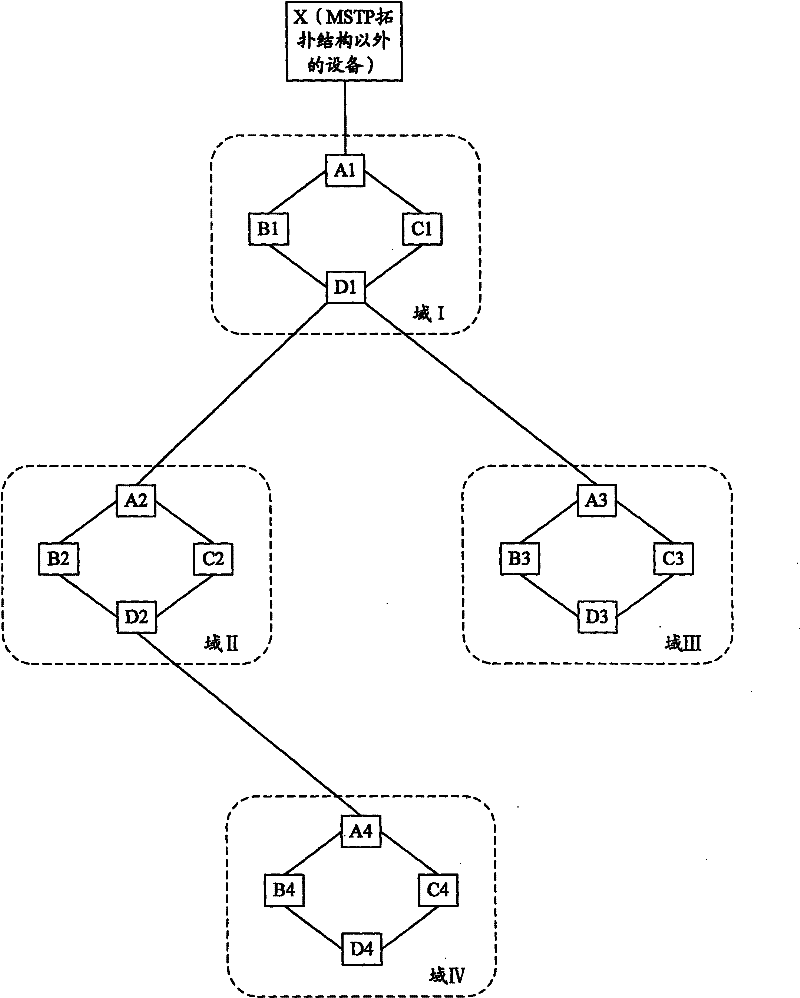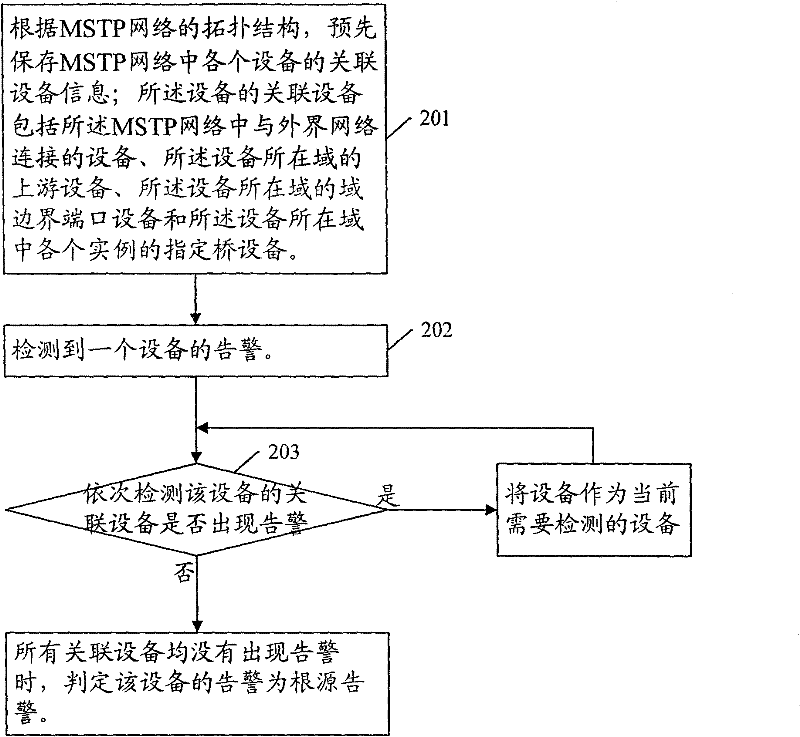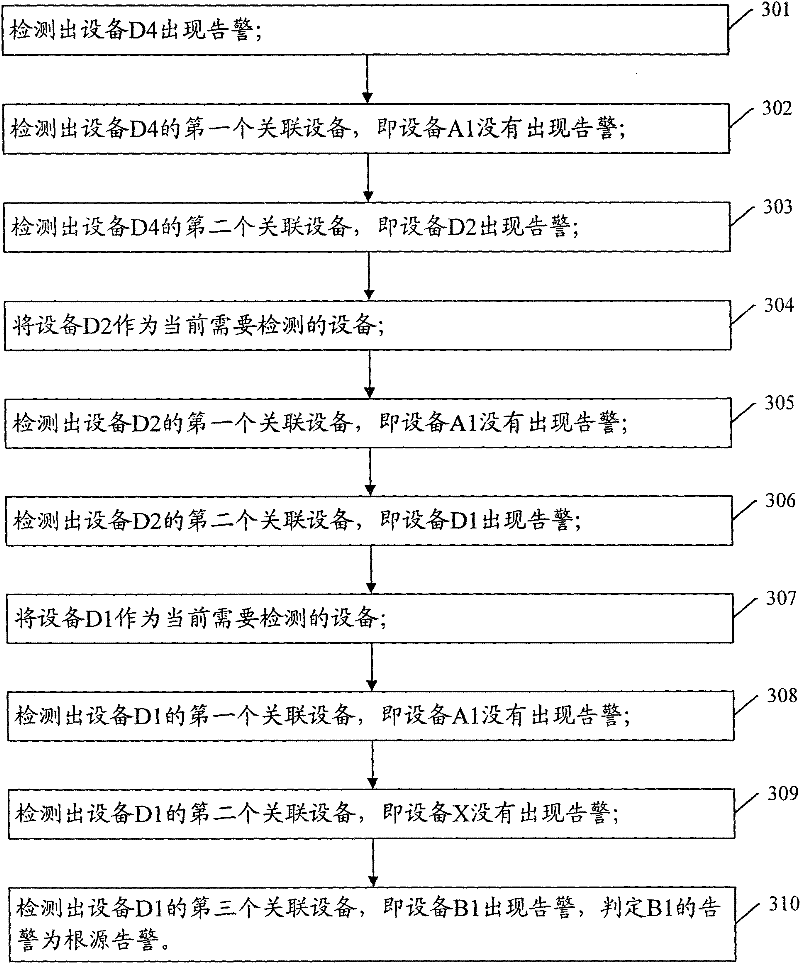Method and device for detecting root alarm
A root cause alarm and device technology, applied in digital transmission systems, electrical components, transmission systems, etc., can solve problems such as large network resources and error-prone, and achieve the effect of narrowing the detection range
- Summary
- Abstract
- Description
- Claims
- Application Information
AI Technical Summary
Problems solved by technology
Method used
Image
Examples
Embodiment 1
[0053] like image 3 It is a flow chart of a method for detecting root cause alarms based on MSTP topology according to an embodiment of the present invention. In this example, figure 1 The shown device D4 has an alarm. It is assumed that the root alarm of the alarm is the alarm of the device B1. The steps of detecting the root alarm in this embodiment include:
[0054] Step 301: Detecting that an alarm occurs on the device D4. The associated device information of D4 is: D4 {[NA, A1, 0, D2]; [IV, A4, 1, B4]; [IV, A4, 2, C4]}, that is, the associated device of device D4 is represented by From upstream to downstream are A1, D2, A4, B4, and C4 in turn, and then detect whether there is an alarm in each associated device in turn.
[0055] Step 302: Detect whether the first associated device of D4, i.e., the device A1, has an alarm. It has been explained above that the present invention only detects the root cause alarm located inside the MSTP topology. Therefore, as the total do...
Embodiment 2
[0068] like Figure 4 It is a flowchart of a method for detecting root cause alarms based on MSTP topology in Embodiment 2 of the present invention. In this example, figure 1 The shown device D4 has an alarm, assuming that the alarm itself is the root alarm, and the steps for detecting the root alarm in this embodiment include:
[0069] Step 401: Detecting that an alarm occurs on the device D4. The associated device information of D4 is: D4 {[NA, A1, 0, D2]; [IV, A4, 1, B4]; [IV, A4, 2, C4]}, that is, the associated device of device D4 is represented by From upstream to downstream are A1, D2, A4, B4, and C4 in turn, and then detect whether there is an alarm in each associated device in turn.
[0070] Step 402: Detect whether the first associated device of D4, that is, device.A1, has an alarm. It is the same as the case of step 302 in the first embodiment above. The detection result of A1 is that there is no alarm, and proceed to step 403. Of course, step 403 may also be di...
PUM
 Login to View More
Login to View More Abstract
Description
Claims
Application Information
 Login to View More
Login to View More - R&D
- Intellectual Property
- Life Sciences
- Materials
- Tech Scout
- Unparalleled Data Quality
- Higher Quality Content
- 60% Fewer Hallucinations
Browse by: Latest US Patents, China's latest patents, Technical Efficacy Thesaurus, Application Domain, Technology Topic, Popular Technical Reports.
© 2025 PatSnap. All rights reserved.Legal|Privacy policy|Modern Slavery Act Transparency Statement|Sitemap|About US| Contact US: help@patsnap.com



